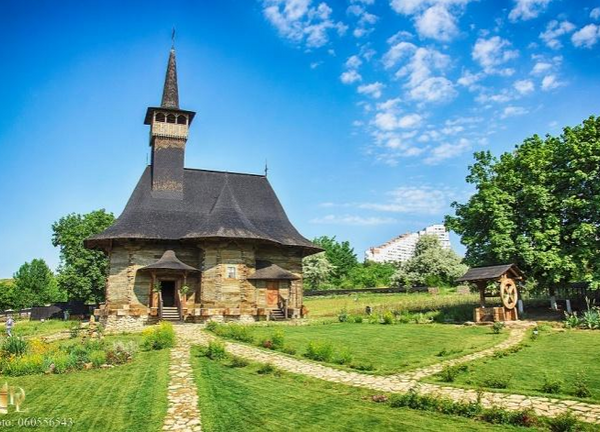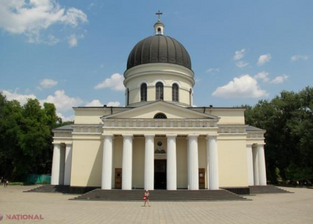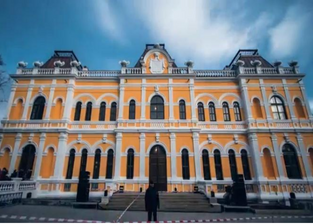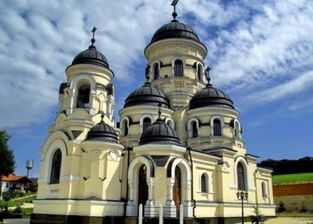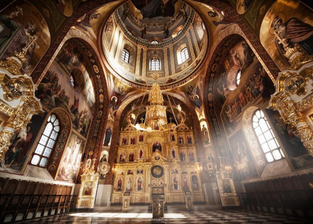Pilgrimage through Moldova.
Program
Hotel accommodation. Tour of the most important streets of the city with the visit of some holy places that offer the traveler a bit of peace and inner peace. Most of the churches in the city date from the 19th century. The most important ecclesiastical edifice is the well-known "Națrea Domnului" Cathedral - the headquarters of the Metropolitanate of the Moldovan Orthodox Church. In contrast to conventional Orthodox churches, three altars are found in this cathedral - the main altar and two side altars. One of the side altars is dedicated to the Moldavian Saint Stephen the Great, revered as a saint. The main representation on the second side altar is the Ascension of the Virgin Mary. Along with the church holiday "The Dormition of the Mother of God (Ascension)", it is also celebrated as the day of the protector of the city of Chisinau. Another important ecclesiastical edifice in Chisinau is the Roman Catholic "Divine Providence" Cathedral - a national architectural monument in the late neoclassical style. The "Cascading Staircase" in the "Valley of Deaths" Park is also one of the tourist attractions of the city, which a guest should definitely visit.
"Căpriana" (15th century) and "Hîncu" (17th century), located in the middle of the picturesque "Codrii Moldovei" (Forests of Moldavia) forest. Visitors are impressed not only by the church architectural ensemble and the interior of the religious buildings, but also by the tumultuous historical events that influenced the construction and subsequent existence of these monasteries. Optionally, on this day, you can also take a trip to Hîncești to visit the mansion of Prince Manuk-Bei (Emanuel Mirzojan). During his lifetime, the Armenian prince Manuk-Bey was one of the richest and most influential people in Europe, whose influence on the course of historical events of the 19th century still arouses controversial assessments today. The monumental palace and the smaller and more comfortable dwelling house of Manuk-Bey, the governor's house, the hunter's house with an observation tower - today's museum of the house, leave the impression on visitors that the walls of these constructions bear the traces of many historical events and destinies of personalities marked.
"Țipova" dates from the 11th century. The monastery is located on the right bank of the largest Moldovan river, the Dniester. The old and eroded terraces on the banks of the Dniester and the deep gorges with waterfalls formed by the Țipova stream give the surrounding landscape of the "Țipova" monastery a special atmosphere. The monastery complex is arranged on three levels, in which three monastery churches are dug into the rock: "Holy Cross" Church (11th-12th centuries), "Saint Nicholas" Church (14th century) and "Assumption of the Virgin Mary" Church ( XVI-XVIII centuries). Continue to "Saharna" Monastery. Around the monastery, Tourists can enjoy beautiful landscapes: picturesque hills, reaching heights of up to 230 meters, deep valleys covered by forests with waterfalls, especially the waterfall with 10-meter steps "Fountain of the Gypsies" on the territory of the monastery. All these beauties of nature around the monastery have inspired many writers, poets, philosophers, painters, photographers and directors. It is not for nothing that this area is called the "Little Switzerland of Bessarabia". After visiting the last monastery, the guests head to the village of Lalova, where they will be served lunch in a Moldavian house (at the "Hanul lui Hanganu" guesthouse).
The first monastic community developed here in the 18th century (1773) from a hermit. On the territory of the monastery there are three monastery churches, among which one of the most beautiful churches in Moldova - the Church of the Nativity of the Mother of God, built in the Baroque style in 1810. It is assumed that this church was built according to the model of another pearl of church architecture - the well-known church "Saint Andrew" in Kiev. The monastery complex also includes the abbot's house, monastic cells, other economic buildings, a fishery, as well as fruit and vegetable gardens.
In addition to the "Curchi" Monastery, the tour also includes the museum complex "Orheiul Vechi" (Orheiul Vechi). After visiting the "Curchi" monastery, guests head to this open-air archaeological and natural attraction, where unique landscapes with traces of several ancient civilizations meet. The cultural landscape "Orheiul Vechi" is included in the tentative list of UNESCO World Heritage. At Orheiul Vechi, at the guests' request, a lunch can be served during a short break, accompanied by folk music, in an authentic Moldovan house. After lunch, guests will visit the famous cellars of the largest wine enterprise in Moldova, "Cricova" - a unique wine cellar (established in 1952) with a labyrinth of underground galleries, named after the different varieties of wines that are matured there. Guests will be able to visit a collection of collectible wines and several wine tasting rooms.
Departure
Prices
The price per person for a group of at least 18 people - starting from 280 Euro
The following costs are included in the rate:
- Accommodation at a 4-star hotel for 4 nights (2 nights Chisinau and 2 nights Complex Codru)
- Breakfast
- Services of a licensed Romanian-speaking local guide
- Visit and wine tasting at the "Cricova" winery, visiting the mansion of Prince Manuk-Bei.
- 1 dinner at Complex Codru.
The following costs are not included in the rate:
- Lunch and dinner, which are not included in the program


 ro
ro


